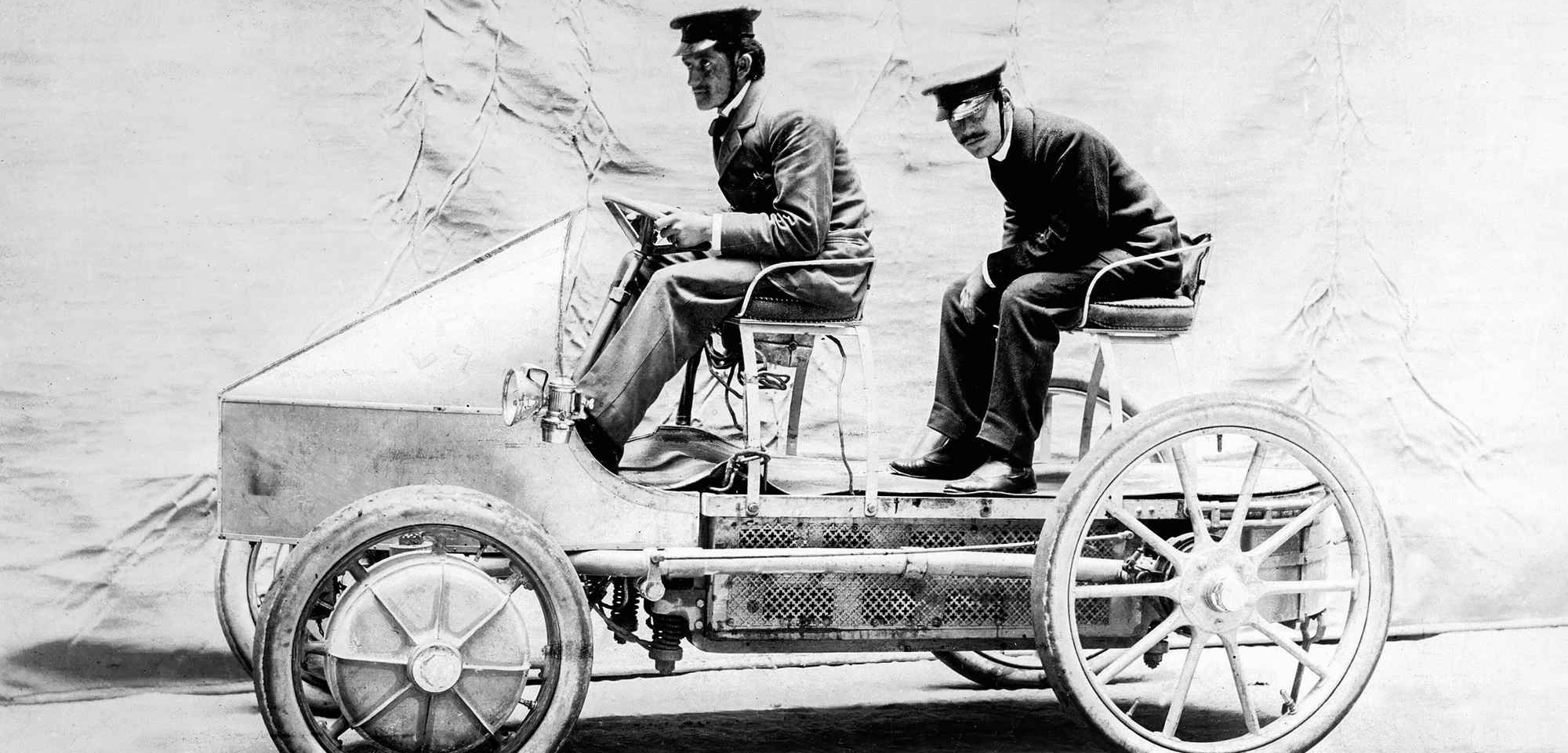
In 1898, Ferdinand Porsche made the world's first hybrid electric vehicle.
Ferdinand Porsche was expected to become a craftsman like his father, instead he developed a passion for electricity.
November 29 ,2018
Born in Maffersdorf, Austria in 1875, Ferdinand Porsche went to Vienna in 1893 to apprentice at an electrical engineering firm. He quickly rose in the ranks, becoming head of the company’s testing department. While serving in this position, he met Ludwig Lohner, head of the carriage-manufacturing company Jacob Lohner. During his travels in the United States, Lohner had become convinced that the age of the horse-and-buggy was ending, and he wanted to start producing electric and gas powered vehicles. He thought electric cars would be particularly marketable, as people sought to avoid excessive noise and exhaust fumes. Lohner commissioned Porsche to come up with an electric drivetrain, as the system that connects a vehicle’s transmission to the drive axels is known. The result, which debuted on the streets of Vienna on June 26, 1898, was the P1.
Constructed by Porsche himself, it had a rear-mounted “octagonal electric motor” that was powered by electric “Tudor” batteries. While the motor itself weighed a relatively modest 287 pounds, the batteries alone weighed some 1,100 pounds; the total weight of the vehicle was 2,997 pounds. Controlled by a 12-speed system, the P1 could reach a top speed of 34 km per hour; a single charge would carry it up to 49 miles. In another innovative touch, the vehicle was also an early convertible of sorts: It could be configured in an open-chassis or coupe style, depending on the season.
In September 1899, Ferdinand Porsche took the P1 to an international motor vehicle exhibition in Berlin, where it represented one of 19 electric vehicle manufacturers among some 120 exhibitors. He drove it himself in a 24-mile road race of electric cars, during which it had to carry four passengers, including the driver. The challenging course included gradients, an 8.6-km high-speed section and a 7.8-km efficiency test. Porsche and the P1 won the race easily, beating the next-best finisher by 18 minutes. Meanwhile, technical difficulties kept more than half of the participants from reaching the finish line, while others were not assessed due to their failure to meet the minimum speed requirement. In addition to the speed race, the P1 also won the award for efficiency, recording the lowest energy consumption in urban traffic. Shortly after the Berlin exhibition, Porsche became the chief designer for Jacob Lohner. In 1900, at the Paris Exposition Universelle, he dazzled international automobile enthusiasts with the Lohner-Porsche, a sportscar fitted with four electric wheel-hub motors that was showcased as the first all-wheel drive passenger vehicle in the world. Porsche went on to design cars for Austro-Daimler, Daimler-Benz and Steyr before forming his own namesake automobile company in 1931. The Type 356, the first sportscar to bear the Porsche name, was released in 1948.